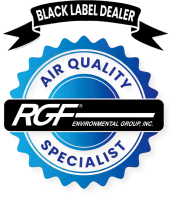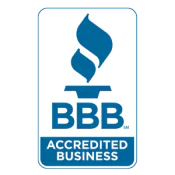Nothing’s more frustrating than hitting your AC during a heat wave and realizing it’s just not cooling like before. That blast of cold air you used to count on has turned into a disappointing lukewarm breeze, leaving you wondering what went wrong.
Most homeowners face this exact problem at some point. The good news? Understanding why your AC’s performance has dropped can help you get that cool air flowing again. Sometimes it’s as simple as a clogged filter, while other times your system might need a bit more attention.
Today, we’re breaking down the basics – what makes your AC work, what typically goes wrong, and what you can do about it. We’ll share practical tips to keep your system running strong and help you know when it’s time to call for backup. Whether your AC needs a quick fix or a serious tune-up, we’ve got you covered.

How Your AC Actually Works
Ever wonder how that big box outside your house turns hot air into sweet relief? It’s not magic – though on a scorching day it sure feels like it. Your AC system works more like a heat removal team than a cold air maker, and knowing the basics helps explain why it might not be cooling like it should.
The key players in your AC’s cooling game:
- An evaporator coil that soaks up heat from your indoor air
- A compressor that pressurizes refrigerant to move heat
- A condenser coil that dumps heat outside
- A blower fan pushing air where it needs to go
- Refrigerant carrying heat from point A to point B
The whole process is pretty neat: Air from your home hits the cold evaporator coil, which contains refrigerant. That refrigerant soaks up heat like a sponge. This warmed-up refrigerant then flows outside to the condenser, which releases the heat into the outdoor air. Your blower fan keeps this cycle going by pushing the newly cooled air back through your house.
When something in this process isn’t quite right, you’ll feel it in your comfort level. That’s why knowing these basics helps spot trouble before small issues become big headaches.
Common Reasons Why Your AC Isn’t Blowing Cold Air
Now that we understand how your AC should work, let’s look at the usual suspects behind weak cooling. These common issues can turn your cooling system from a powerhouse into a glorified fan.
Thermostat Troubles
Sometimes the fix is right on your wall. A thermostat set incorrectly or malfunctioning won’t properly communicate with your AC system. Double-check that it’s actually set to “cool” and at your desired temperature. If the display seems wonky or the system isn’t responding to adjustments, you might have a thermostat issue on your hands.
Dirty Air Filters: The Silent Cooling Killer
This is the most common and easily fixable problem. When filters get clogged with dust and debris, they restrict airflow like a clogged artery. Your system has to work harder while delivering less cooling power. Check those filters monthly and replace them every 60-90 days – more often if you have pets or live in a dusty area.
Outdoor Unit Blockage
Your outdoor condenser unit needs breathing room to dump heat effectively. When it’s choked by leaves, grass clippings, or overgrown vegetation, it can’t release heat properly. Keep the area around your unit clear and hose off any visible debris regularly.
Refrigerant Issues
Low refrigerant usually means there’s a leak somewhere in the system. Warning signs include ice on the copper lines, hissing sounds, or steadily decreasing cooling performance. Since refrigerant requires special certification to handle, this one’s strictly a job for the pros.
Frozen Evaporator Coil
If airflow is restricted or refrigerant is low, your evaporator coil can freeze up. This creates a nasty cycle – ice builds up, blocking more airflow, leading to more ice. If you spot ice on your coil, shut the system down and let it thaw before running it again.
Blower Problems
A faulty blower fan means weak air circulation through your home. Listen for unusual noises or weak airflow from your vents. Motor issues, loose belts, or electrical problems could be behind blower troubles.
Ductwork Deficiencies
Up to 30% of cooled air can escape through leaky ducts before reaching your rooms. Check exposed ductwork for obvious gaps or disconnections. Professional duct testing can pinpoint less visible leaks affecting your system’s efficiency.
Age and Size Issues
AC units typically last 15-20 years. As they age, parts wear out and efficiency drops. If your system’s pushing its life expectancy, declining performance is normal. Similarly, an improperly sized unit – either too big or too small – will never cool effectively, no matter how well it’s maintained.
Keeping Your AC Running Strong
Nobody wants to shell out thousands for a new AC unit. That’s exactly why staying on top of maintenance is so important – it keeps your system humming along and helps dodge those budget-busting breakdowns. Here’s the scoop on keeping your AC in fighting shape.
Getting Professional Eyes on It
Think of an annual AC check-up like your car’s oil change. A tech can spot those tiny problems before they turn into wallet-draining disasters. They’ll test refrigerant, clean the vital parts, and make sure everything’s running right. Book these tune-ups in spring, before the real heat kicks in.
Stuff You Can Handle Yourself
While some AC work needs expert hands, plenty of maintenance is totally DIY:
- Pop those filters out monthly – replace them when they look dirty
- Rake leaves and grass away from your outdoor unit
- Keep bushes and plants cut back from the unit
- Check all your vents aren’t blocked by furniture
- Give those return grilles a good vacuum now and then
Spotting Trouble Early
Your AC drops hints when it’s unhappy. Keep your eyes peeled for:
- Energy bills that suddenly jump
- Weird clunking or grinding sounds
- Funky smells from the vents
- Some rooms staying warmer than others
- System that never seems to shut off
Catch these signs early, and you’ll usually dodge the really expensive fixes. Plus, a well-maintained system runs cheaper and lasts longer – and that’s just smart homeownership.
When to Call a Professional
Even if you’re pretty handy around the house, some AC problems need expert attention. Knowing what you can handle yourself and when to pick up the phone can save you from making a small problem much worse.
Red Flags That Need Pro Attention
Ever noticed ice forming on those copper lines, or heard an odd hissing sound? That’s probably a refrigerant leak – definitely not a DIY fix. Same goes for weird electrical issues like breakers that keep tripping or scary burning smells. If your system starts making awful grinding noises, stops cooling altogether, or ignores your thermostat completely, it’s time to call in backup.
Most of these problems involve tricky components that need special tools and know-how. Trying to wing it yourself might just leave you with a bigger headache and a lighter wallet.
Finding Someone You Can Trust
The trick is finding a tech who knows their stuff. You want someone with real certifications and proper insurance – not just a guy with a truck and some tools. Good techs explain things in plain English and give you clear, written estimates. They won’t pressure you into repairs you don’t need.
What to Ask Before They Start
Talk money first – get those service fees and hourly rates nailed down. Ask about their experience fixing your type of AC and what happens if something goes wrong after they leave. Make sure they can handle emergencies too.
Just remember – rock-bottom prices usually mean corner-cutting somewhere. Better to pay a bit more for someone who’ll do it right the first time and stand behind their work.
Enhancing Home Comfort and Energy Efficiency
Even a perfectly running AC system can use a helping hand, especially during peak summer heat. Let’s explore some smart ways to boost your home’s cooling power while keeping those energy bills in check.
Making the Most of What You Have
Ceiling fans are your AC’s best friend. Running them counterclockwise during summer creates a cooling breeze that makes rooms feel several degrees cooler. This simple trick lets you raise your thermostat a few degrees without sacrificing comfort.
Your windows can make or break your cooling efforts. Quality blinds or shades, especially on south and west-facing windows, block intense afternoon sun that forces your AC to work overtime. Consider thermal curtains or window films for extra protection against heat gain.
Thinking About an Upgrade?
Modern AC systems are light years ahead of older units in energy efficiency. Today’s models with high SEER ratings (Seasonal Energy Efficiency Ratio) can slash cooling costs dramatically compared to systems from even a decade ago. While the upfront cost is higher, the long-term savings often justify the investment.
The best part? You might not have to shoulder the full cost alone. Many utility companies offer rebates for upgrading to energy-efficient systems. Local and federal tax incentives can also help offset the cost of these improvements. Some programs even provide additional perks for choosing ultra-efficient models with SEER ratings above 16.
Don’t forget about smart thermostats – they’re another game-changer for efficiency. These devices learn your schedule and preferences, automatically adjusting temperatures to optimize both comfort and energy use. Many energy providers offer incentives for these upgrades too.
How Outside Conditions Affect Your AC’s Performance
Let’s talk about something most folks don’t consider – the way weather and surroundings can make or break your AC’s cooling power. These external factors often explain why your system might be struggling more on some days than others.
When the Heat Gets Real
Those scorching summer days are tough on your AC. Think about it – when it’s pushing 95 degrees outside and you’re trying to keep your house at 72, that’s a huge gap your system has to overcome. Your AC might run non-stop just to keep up, burning more energy and putting extra strain on all its parts.
The Humidity Factor
Sticky summer air is more than just uncomfortable – it’s actually making your AC work overtime. Before your system can cool effectively, it needs to deal with all that moisture in the air. That’s why sometimes your house feels warmer than what the thermostat says, and your AC keeps chugging along trying to get things comfortable.
Give Your Unit Some Breathing Room
Take a look at your outdoor unit. If it’s crowded by bushes, buried in leaves, or blocked by your kids’ bikes, it can’t do its job right. Your AC needs space to dump all that heat it’s pulling from your house. Keep the area clear, trim back those plants, and make sure nothing’s crowding your unit – especially during those brutal summer months.
Common Myths About AC Performance
Let’s bust some persistent myths about air conditioning that might actually be hurting your system’s performance and your wallet.
Setting Super Low Temperatures
Ever cranked your thermostat down to 60 degrees hoping to cool your house faster? We’ve all been there, but here’s the truth: your AC cools at the same rate regardless of the temperature setting. Setting it lower just makes your system run longer, wasting energy and straining components. Your AC works best when you choose a reasonable target temperature and let it maintain that steady level.
The “Bigger is Better” Myth
Surprisingly, an oversized AC unit causes more problems than it solves. While it might cool your space quickly, it shuts off before completing a full dehumidification cycle. This short-cycling leads to uneven cooling, higher humidity, and excessive wear on your system. Proper sizing matters – your AC should be just powerful enough to handle your home’s specific cooling needs.
The Closed Vent Theory
Many homeowners close vents in unused rooms thinking they’ll save energy and redirect cool air to other areas. In reality, this throws off your system’s balance. Your AC is designed to work with your home’s entire duct system. Closing vents creates pressure changes that can reduce efficiency, strain your blower motor, and even lead to duct leaks. Keep those vents open to let your system work as intended.
Get Your AC Back to Peak Performance with Holt
Spotting AC troubles early saves headaches and money down the road. Whether you’re dealing with weak airflow, warm air, or rising energy bills, there’s usually a fixable cause behind it. The trick is catching problems before they get worse.
Here at Holt Plumbing & Heating, we’ve been keeping West Des Moines homes comfortable since 1947. Our techs know every AC system inside and out, and we tackle problems the right way – no shortcuts, no band-aid fixes. We work on all brands and offer easy payment plans to fit your budget.
If your AC’s not keeping up with the Iowa heat, let our family-owned team take a look. From simple tune-ups to full system upgrades, we’ve got you covered across West Des Moines.
Need help with your AC? Call us at (515) 209-2360. We’ll get your home cool again.












